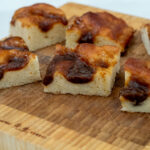
This recipe for traditional Danish Brunsviger Cake is easy to make and perfect if you are looking for an old-fashioned and classic Danish cake.
The Danish word Brunsviger cannot be translated into English but the meaning is well known by a Dane. The Brunsviger Cake is a delicious yeast dough cake topped with plenty of delicious butter and brown sugar mixture.
See also: Traditional recipe for Danish Dagmar tart
On this page I will show you how easy it is to make a Danish Brunsviger Cake and share a couple of tricks to avoid the common mistakes. Continue reading and learn how easy it is.
The history of Brunsviger Cake
The Brunsviger can be purchased from every pastry shop in Denmark but it is originally from Fyn which is the central part of Denmark. It is unknown when this cake was made and served the first time but it has for sure been around for generations. Today, it is well-known by almost all Danish people and is a very popular cake.
Traditional Brunsviger or Birthday Brunsviger
The traditional Danish Brunsviger is baked in a square pan and then later cut and served in smaller pieces. This is the classic way of making this cake. At some point in history somebody have developed this recipe and made this traditional cake into a birthday cake which is in Danish known as a Kagemand (Cake man). A Brunsviger birthday cake is easy made. You simply just make a traditional Brunsviger cake and then decorate it with all kinds of your favorite candy like wine-gum, M&M and so on.
See also: Recipe for traditional Danish Birthday Cake
The recipe is exactly the same as the traditional recipe shown further down on this page. However, the birthday version of this cake is not squared anymore instead it is shaped like a man or a woman depending on the gender of the person whose birthday it is.
Brunsviger made in square oven plate
The traditional Brunsviger is made in a square oven plate like I have done. However, it can also be made in a circular springform cake tin or whatever cake tins you have. The result will still be a delicious cake. The traditional cake is square but a circular cake is also fine - it is up to you.
Tips when making the Brunsviger cake
As already said, it is actually really easy to make a Brusviger cake. I just have a couple of tips that I would like to share with you. The first tip; in step seven in the recipe, we are going to make indentations in the dough. In these indentations we are going to add the butter-sugar mixture. It is important that these indentations deep but does not break through the bottom of the dough. We want deep indentation so that they can be filled with plenty of sugar mixture.
See also: Recipe for Danish Cinnamon Twist (Kanalstang)
The second tip is closely related to the first. It is a good idea to make a moat along the edge of the dough. The moat will help keep the butter-sugar mixture on the top of the cake. Otherwise, it will run away and sugar coat the inside of your oven. This can be a little tricky. I have personally sugar coated my oven several times.
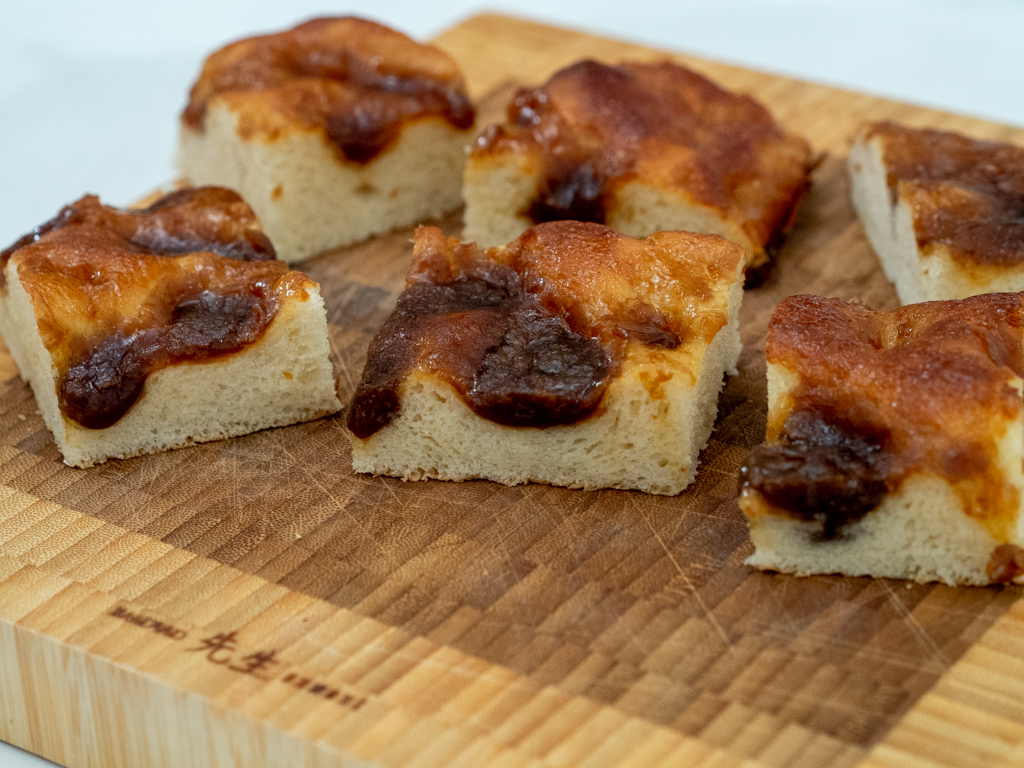
Ingredients
Brunsviger Dough
- 3 dl milk (lukewarm)
- 50 g fresh yeast (or equivalent dry yeast)
- 50 g sugar
- 100 g butter (melted and cooled)
- 500 g all-purpose flour
- 1/2 tsp salt
Sugar topping
- 150 g butter
- 250 g brown sugar
- 4 tbsp heavy cream (alternativ milk)
- 3 tbsp vanilla cake creme powder (optional)
Instructions
- Dissolve the fresh yeast and sugar in the lukewarm milk.
- Melt the butter and let it cool off before adding it to the milk.
- Add all-purpose flour and salt. Knead the dough for about 10 minutes or until it assemblies into a nice and smooth dough. You can with advantage use a kitchen machine.
- Cover the bowl with a clean dish towel and let the dough rise into double size someplace warm. This takes about 30 minutes.
- Flatten the dough into a square with a size of about 40 x 40 cm (16 x 16 inch). Transfer the dough onto a parchment paper covered oven plate. Let the dough rise for another 20 minutes. While the dough is rising prepare the sugar topping.
- In a small sauce pan; melt the butter and brown sugar. When the butter-sugar mixture is hot add the heavy cream and mix it together. Remove the mixture from the heat and let it cool off.
- Use your fingers to make indents into the dough. The indents should be deep and almost reach the bottom but without breaking through the dough. Also, make a small moat along the edge of the dough to keep the sugar topping on the top.
- Distribute the prepared sugar topping across the dough and bake the cake for 12 minutes in a 225 C (440 F) well-preheated oven.
- Let the cake cook off a little bit before serving it.

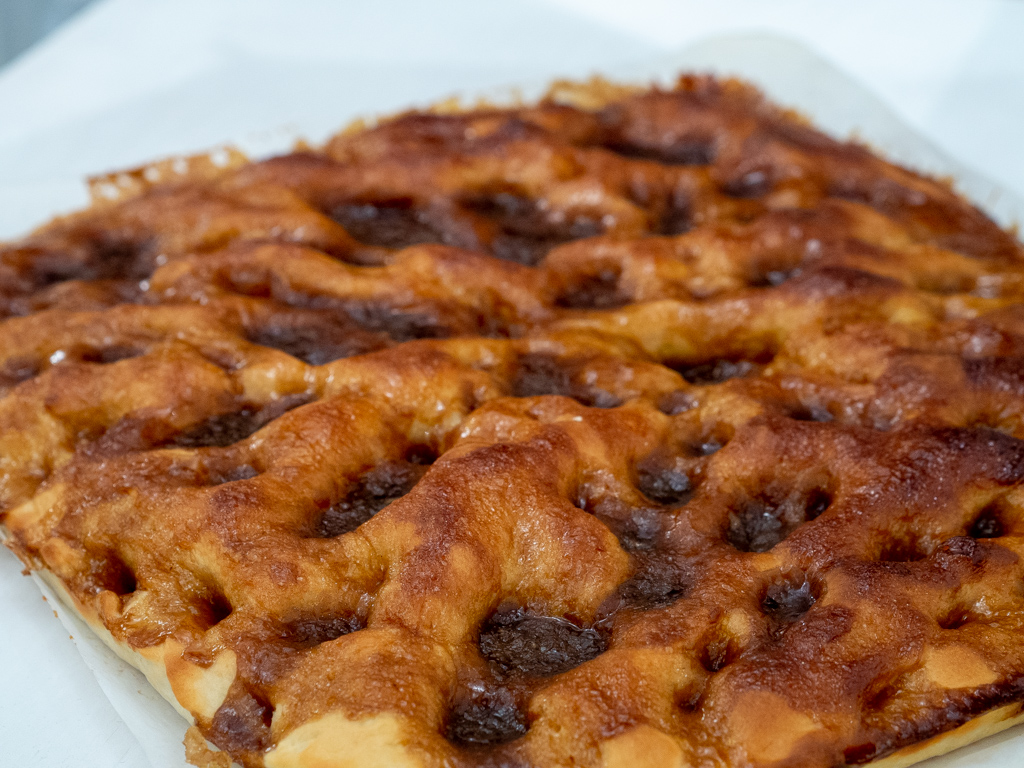
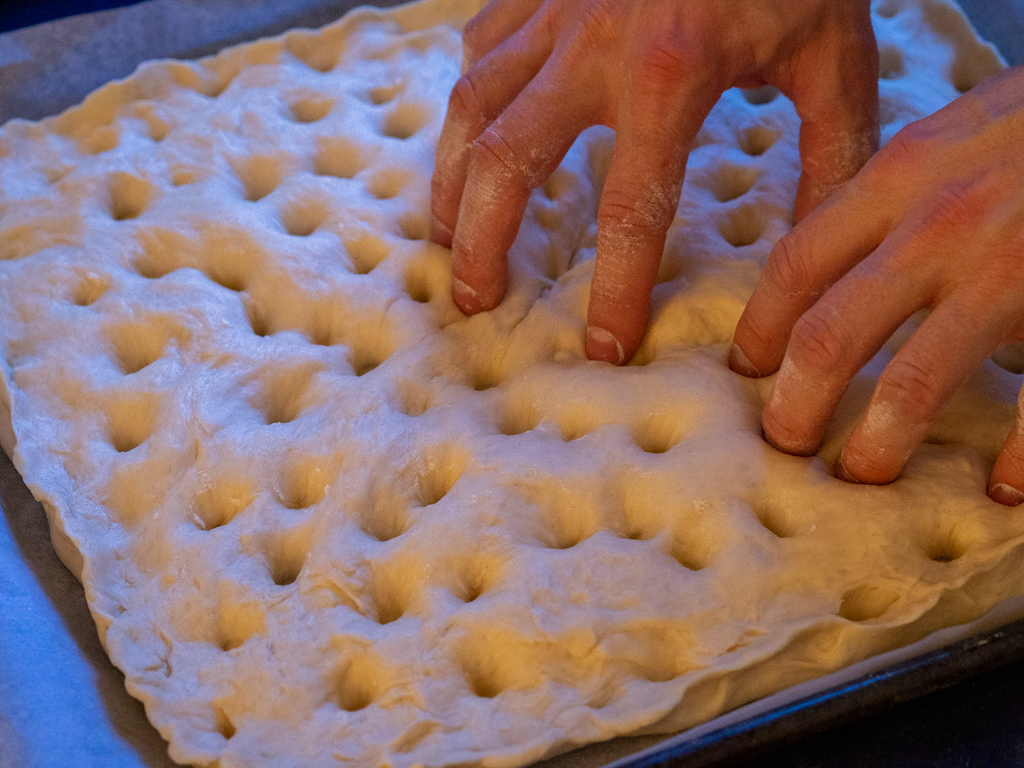

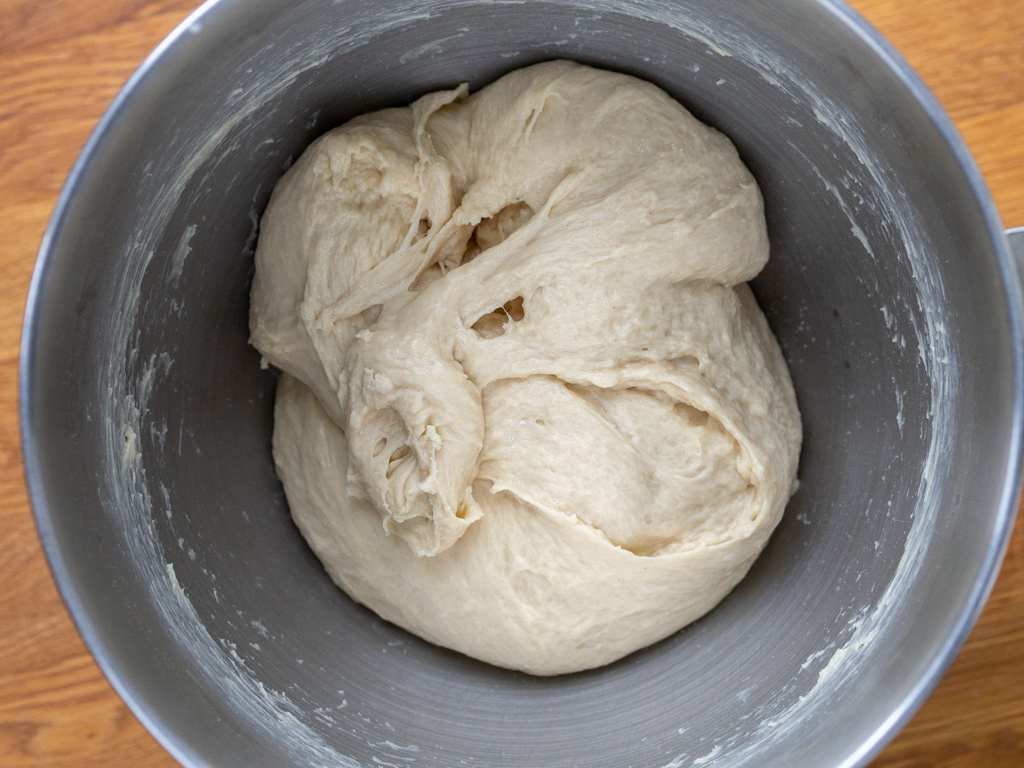
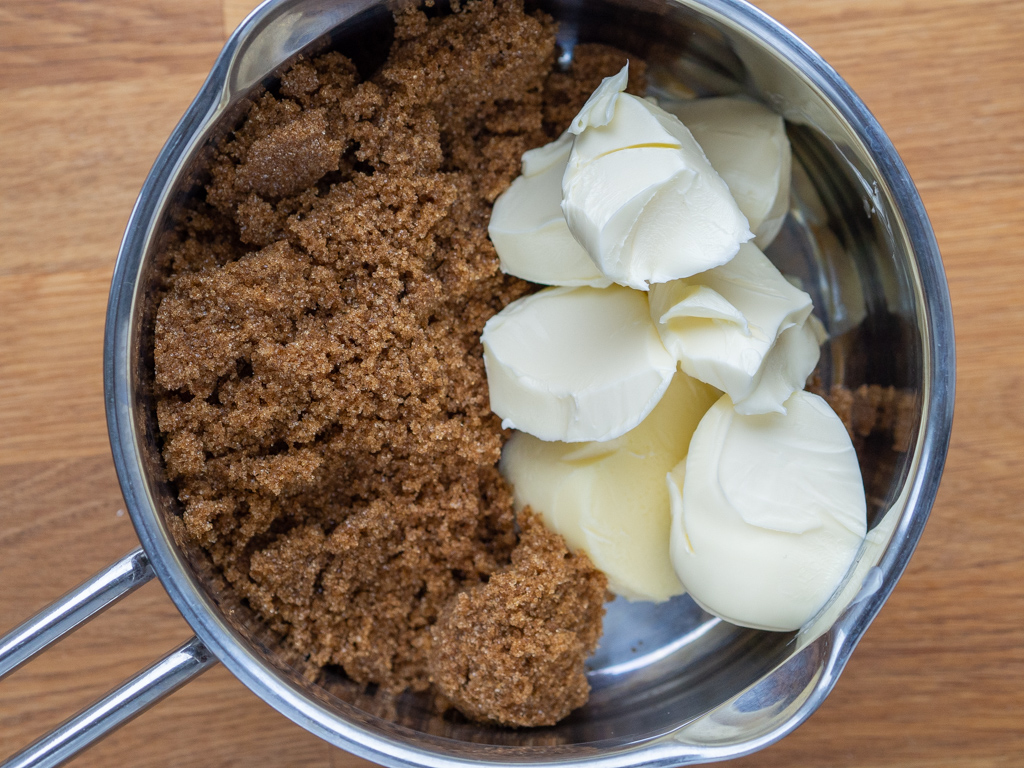
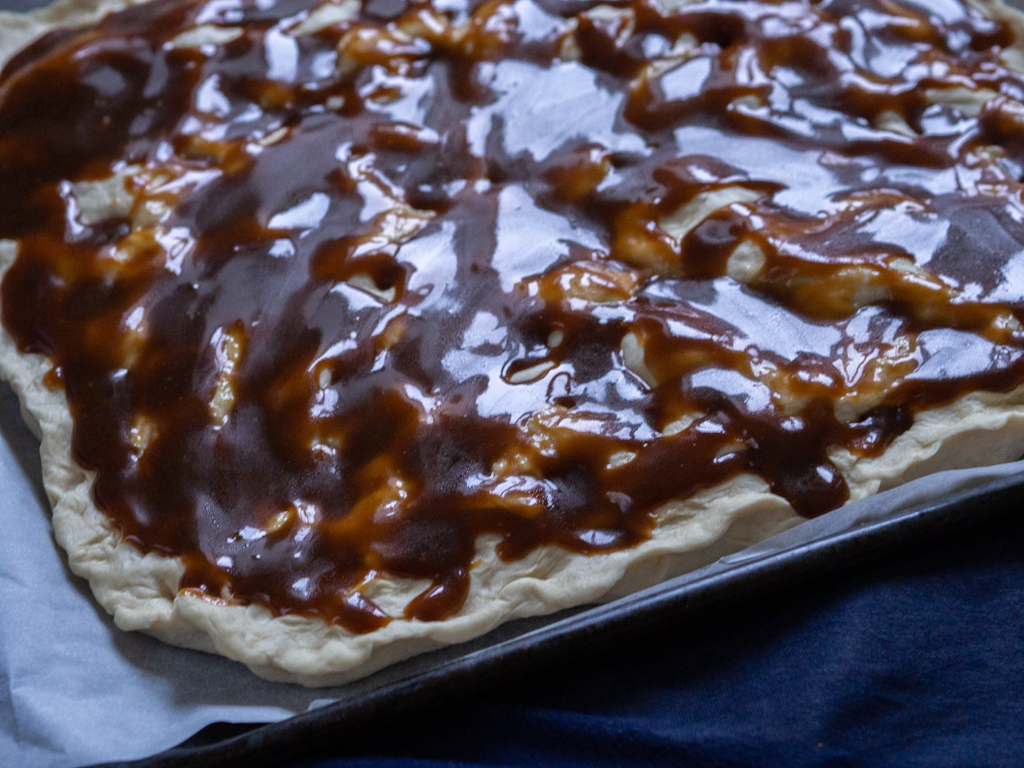
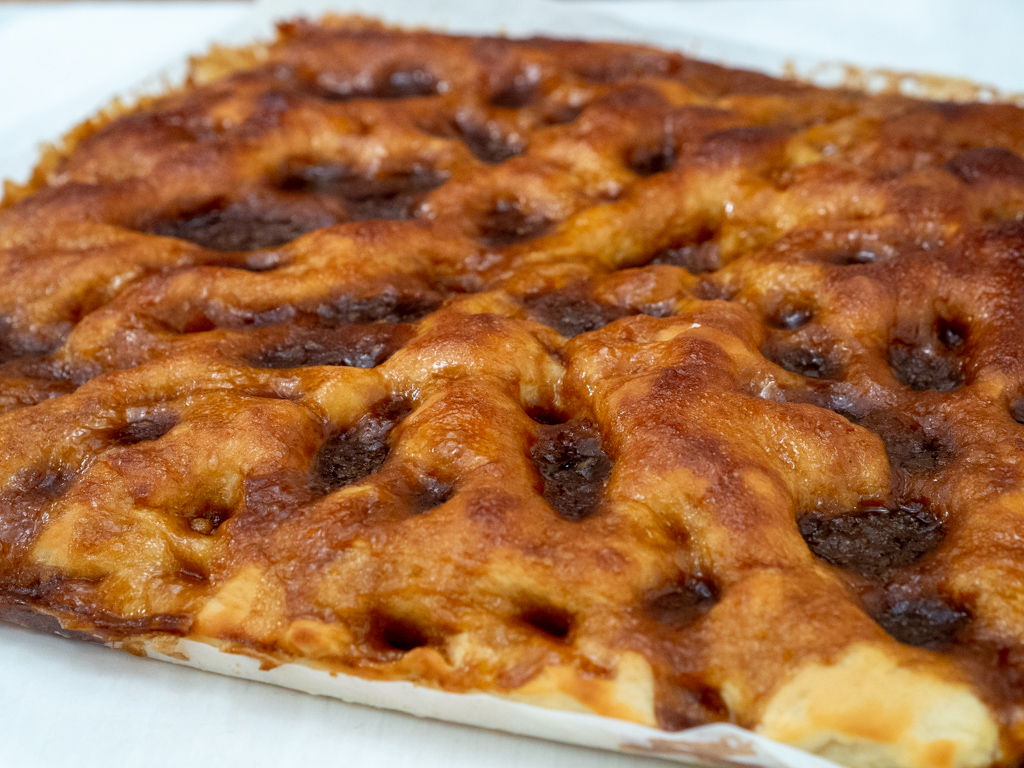
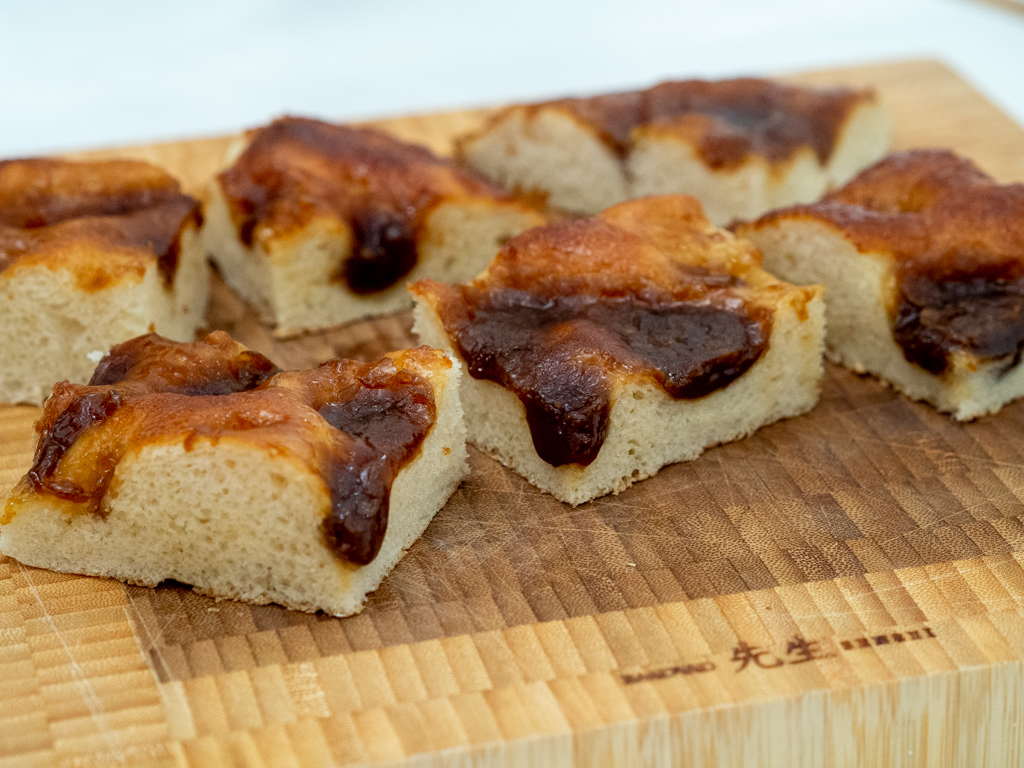

Sophie
Just making this recipe but I noticed that you mention cream in the instructions but not in the ingredient list! I'm going to go ahead and make it without as I don't have any but just wanted to let you know! The dough instructions are awesome! It looks super good so far! Can't wait to taste it!
Kim Nielsen
I happy that you like the recipe and THANKS for letting me know about the small mistake in the recipe for Danish brunsviger. I was missing the cream in the ingredients list. However, you can also make the topping without cream so no problem if you already made it without. Regards Kim (NordicFoodLiving.com)
Lisa
Just made Brunsviger and used cream. Didn’t look as dark as picture and didn’t stay on top. Dough was amazing texture. My uncle had a bakery in Aalborg and his recipe was without cream but couldn’t use his recipe quantities not right. Love your recipes
Charlotte Trotman
Perfect! I used to run to the kiosk in Nyborg to buy slices of these for breakfast. Brought back memories. Great recipe and the dough is a perfect bake. Thank you.
Kim Nielsen
You are welcome - I am happy that you like the recipe for brunsviger - it is a real Danish cake :-) Regards Kim (NordicFoodLiving.com)
Linda
Hi Kim,
I noticed that step 3 says to add the salt, but no measurement is given for salt in the ingredients list. I took a guess, but am wondering what the quantity should be. Thank you so much—I enjoy your recipes!
John
How much salt is to be used?
Kim Nielsen
Thanks for letting me know about the missing salt in the ingredients list. I have updated the list. Please add 1/2 tsp of salt. Regards Kim (NordicFoodLiving.com)
john
Thank you! I plan to use this dough recipe to make a kagekone for my wife for US Mother's Day tomorrow. I'll let you all know how it turns out.
Nakita
My father, who's from denmark, was delighted! It tasted really good and just like a Brunsviger should!
Kim Nielsen
Thanks for the nice feedback. I am happy that you like this recipe for Danish Brunsviger cake :-)
Lisa
Hello, Can the dough be made the night before and put in the refrigerator? I would like to serve it at an early morning gathering but don't want to get up before dawn!
Kim Nielsen
I have not tried to make the dough in advance but I don't see the issue. It should work. But maybe reduce the amount of yeast just a little bit. Regards Kim (NordicFoodLiving.com)
Tobias
Hello, it was a delicious cake as it was, but as a dane i have a few things to say.
First of all a we use 1 tsp cardamom in the dough witch give it a flawour and we also add 2 eggs to the dough. Hope you will try it.
Kim Nielsen
Thanks for your comment. I will try the 1 tsp cardamom and two eggs in the dough the next time I make this recipe. Regards Kim (NordicFoodLiving.com)
Sally Kjjaer
Hi, what kind of yeast can I use to replace fresh yeast, and how much, I live in NZ and have never made Brunsviger but love it for home in Danmark
Thank you
Kim Nielsen
Hi. I don't have much experience with dry yeasts as we normally only use fresh yeast here in Denmark. However, I have found the following conversion. I hope it can help you.
Fresh yeast to active dry yeast you need to multiply the fresh amount by 0.4. Active dry yeast must be hydrated in warm water before being incorporated into a dough.
Fresh yeast to instant dry yeast, you need to multiply the fresh amount by 0.33. Instant yeast should be mixed with the flour.
Brenda Lisk
Hi - thus looks amazing and I’d like to try it shortly. However, not sure how much 3dl milk is?
Kim Nielsen
3 dl (decilitre) milk is the same as 1 1/3 cups. Regards Kim (NordicFoodLiving.com)
Robert Neuschul
Brunsviger is perfectly translatable: it means of or from Brunsvig - the German city of Braunschweig, which is rendered in English as Brunswick. The reason for the name of the Danish pastry is perfectly simple: the Brunsviger cake is a direct copy of a Braunschweig cake with as near-identical a recipe and appearance as makes no difference! Braunschweigers have been baking this cake for a very long time - since long before Viennese bakers went to Copenhagen during the bakers' strikes and Denmark learned about layered pastries.